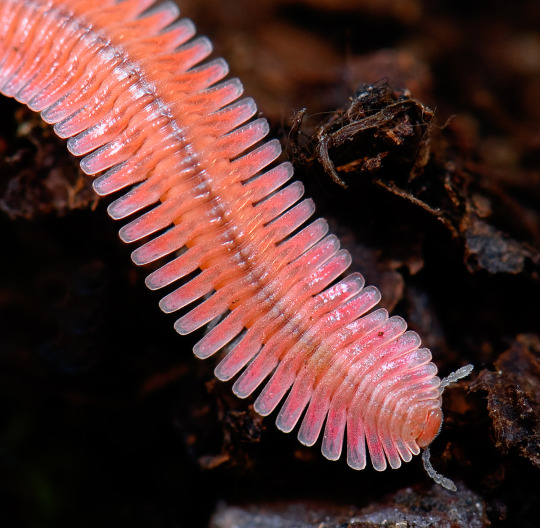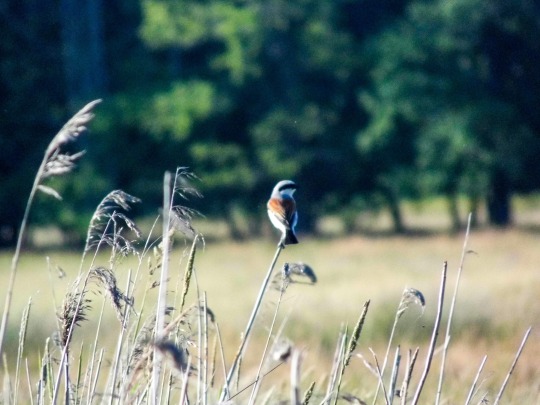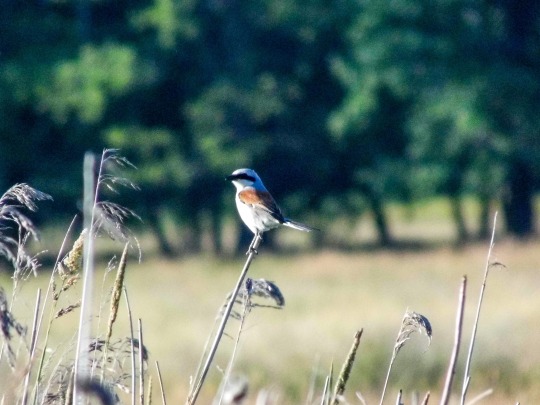Text
I haven't talked reptiles in Wet Beast Wednesday in a while (and the first time I did it got like 9 notes) so I'll do it again with marine iguanas. Admittedly they're more amphibious than aquatic, but there's no Moist Beast Monday and I think they're cool so it'll have to do.
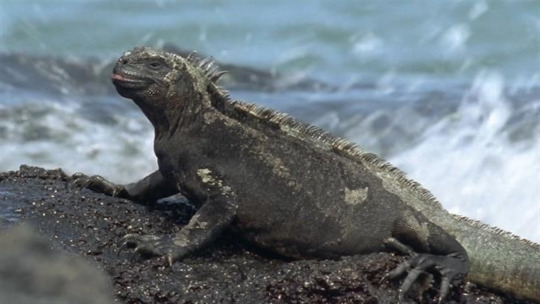
(Image: Doug Jones in The Shape of Water a marine iguana basking on a rock)
Marine iguanas (Amblyrhynchus cristatus) are large lizards native to the Galapagos Islands. They are unique for being the only extant lizards that spend time in the ocean. As of 2017, there are 11 distinct subspecies that are isolated from each other by the islands they live on. Occasionally a member of one subspecies will end up on the wrong island and produce hybrid offspring. Marine iguanas also can but very rarely do hybridize with the land iguanas of the Galapagos, with whom they are believed to share a common ancestor.
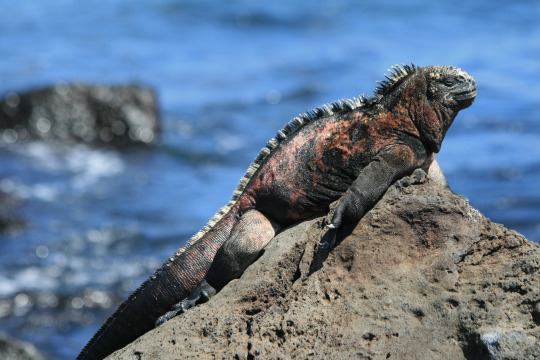
(Image: an iguana perched on a rock
Marine iguanas vary in size based on subspecies, with those from smaller islands reaching a smaller adult size. In general, they race from 12 to 56 cm (4.7 - 22 in) from snout to rear, with a tail ranging from 17 to 84 cm (6.7 - 33.1 in). Males are significantly larger than females, up to twice the weight and noticeably longer. Marine iguanas are robust, with relatively short limbs. Their leg bones are heavy, to provide ballast while swimming. Their tails are laterally flattened and provide propulsion for swimming. They have a row of spines down their backs that provide stability while swimming, similar to a fish's dorsal fin. Their feet have powerful claws and can be used to cling onto and push off of undersea rocks. Marine iguanas were noted by many explorers for their dark color, including Charles Darwin (who referred to them as "clumsy" and "disgusting"). This dark color helps them warm up quickly after diving in the sea.

(image: an iguana going for a swim)
A major feature of the marine iguana is its diet, which is a huge factor in their semiaquatic lifestyle. They feed almost exclusively on green and red algae that grown underwater. To reach the algae, females and smaller males browse the intertidal zone during low tide, while larger males and abnormally large females can swim out to the deeper subtidal zone to forage. They can spend an hour underwater one one breath and dive to 30 m (98 ft), but most dives are much shallower and shorter. Only the largest males swim offshore and dive to significant depths for their food. Because they are positively buoyant, divers must actively swim or cling onto rocks to stay underwater. Most individuals will return to the same spot for feeding and competition over feeding spots have been known to happen. Larger males that swim out for their food have the advantage of less competition for their feeding spots. The species has adapted to be able to fast or subsist on reduced for long periods. During El Nińo, where food supplies can be reduced for years, they will actually shrink, with even their bones getting shorter, then return to full size once the food supply is restored. Because they consume excess salt with their food, marine iguanas have developed the ability to filter the salt out of their blood and expel it through glands in their nostrils. The secreted salt can then be sneezed away. Juveliles spend the first few months of their life feeding on (WARNING: GROSS) the feces of older iguanas. This helps them develop the culture of symbiotic gut bacteria that helps them digest algae. In fact, their digestive systems are so specialized to algae that they can't switch diets.

(image: a marine iguana grazing on algae underwater)
As ectotherms (cold-blooded animals), marine iguanas need to keep themselves warm to survive. The water around the Galapagos is typically around 11-23 degrees C (52-75 F) while their preferred body temp is 35-39 C (95-102 F). This high preferred temperature helps with their digestion. To keep themselves warm, the iguanas spend a lot of their time basking in the sun, especially after swimming. They can also reduce their heart beats while cold to help prevent heat loss. Basking iguanas can cover large beaches. They live in colonies that usually range between 20 and 500 individuals but can sometimes get up to 1000 members. Their biomass to area ratio can be the highest of any reptile. While they are considered gregarious, they display no social behavior such a grooming. The closest they get to a group activity is sleeping next to each other to conserve heat at night. They also get along with other species, such as Darwin's finches, mockingbirds, and crabs who will pick parasites off their skin. Divers may allow cleaner fish to pick off bits of dead skin. Another lizard, the lava lizard, likes to visit colonies to hunt flies attracted to the iguanas. The iguanas allow the much smaller lizards to climb all over them. Marine iguanas often share beaches with Galapagos sea lions, who will occasionally allow the iguanas to climb over them.
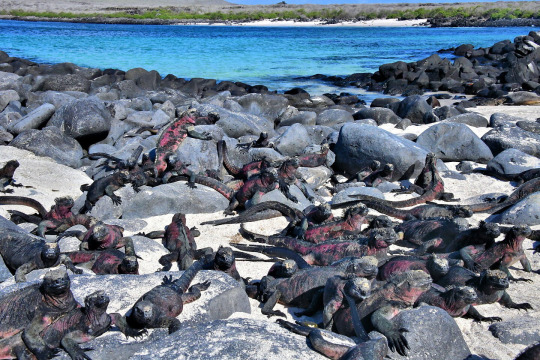
(image: a group of iguanas basking together)
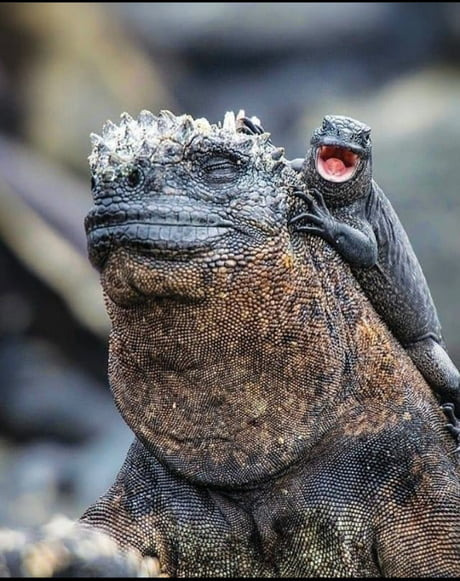
(image: a male marine iguana, identifiable by the rough scales on his head, with a lava lizard climbing on him)
During mating season, male iguanas stop being as chill with their neighbors, attempting to establish a territory and push other males out. They also change from their normal dark appearance to a much brighter coloration. Territories are usually bordered by rocks or crevasses and can be found next to each other in groups. Males will attempt to attract females to their territories while fighting other males to get access to their females. This behavior is called lekking. Females show a distinct preference for larger males and it is the largest males that are most successful at maintaining territories. Medium males are forced to patrol the edges of territories to try to pick up mates while small males often pretend to be female to sneak into another's territory and attempt to mate. Males with territories defend them with special displays where they will raise their dorsal spines and open their mouths while bobbing their heads around. If another male challenges the dominant, they will display at each other. If neither submits, a fight will start. Males fight by headbutting and trying to push each other around. These fights can last for hours and the participants will occasionally take breaks. In most cases, one will eventually display a submissive posture and retreat, though in a few cases the fight has escalated to biting and scratching. When courting a female, a male will nod at her and approach in a sideways walk. Smaller males without territories may also try mating forcibly. Females only mate once per year and will signal rejection to additional suitors by nodding at them.
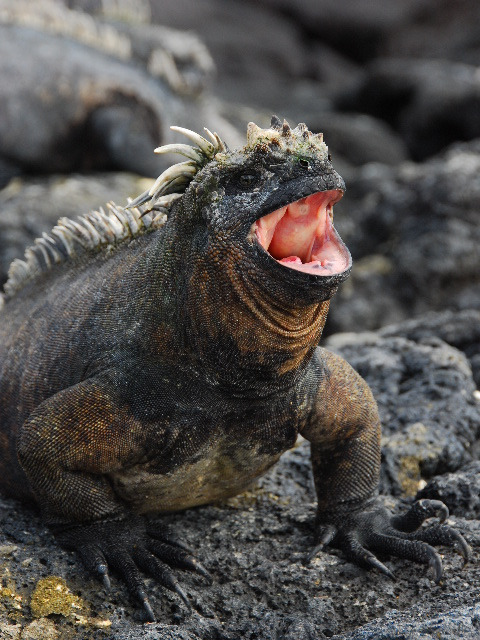
(image: a male performing a territorial display)

(image: two males headbutting each other in a territorial battle)
Mating season usually lasts between December and March. Females will lay eggs about a month after mating. The eggs (usually 2 to 3 but sometimes up to 6) can collectively weigh up to a quarter of the mother's weight, which is very large for an iguana. They are laid well above the tide line and buried in sand or soil. In places with few good nesting sites, mothers will guard their eggs after hatching to make sure other females don't dig therm up to steal the spot. When females fight over nesting spots they are less disciplined than males and will quickly resort to biting. The eggs hatch after 3-4 months. Females reach sexual maturity after 3-5 years while males do so after 6-8 years. They live an average lifespan of 12 years, but can live up to 60.

(image: a female iguana digging her nest)
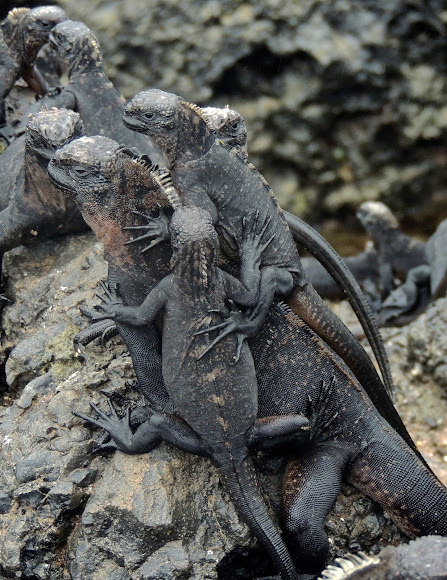
(image: a group of juveniles climbing on each other)
Marine iguanas are classified as vulnerable by the IUCN, while a few populations are instead considered endangered. A major threat to them is warming seas, which can reduce the red and green algae populations and replace them with inedible brown algae, leading to starvation. Marine iguanas only have a few predators and most of them target juveniles or small adults. As a result, the adults demonstrate island tameness, a lack of wariness to potential predators. This has left them vulnerable to predators introduced by humans, such as dogs, cats, rats, and pigs. Despite these invasive predators being present for ver 100 years, they have not developed any anti-predator defenses against them, a phenomenon called ecological naïveté. They also do not fear humans and will allow tourists to approach them, which has led to injuries and the spread of human-introduced diseases. They are protected by laws of Ecuador and most of their range is in protected areas. Efforts to remove invasive predators have seen some benefit. They are difficult to keep in captivity due to their specialized diets, and they have never been bred in captivity.

(image: a male with his bright mating season coloration)
182 notes
·
View notes
Text
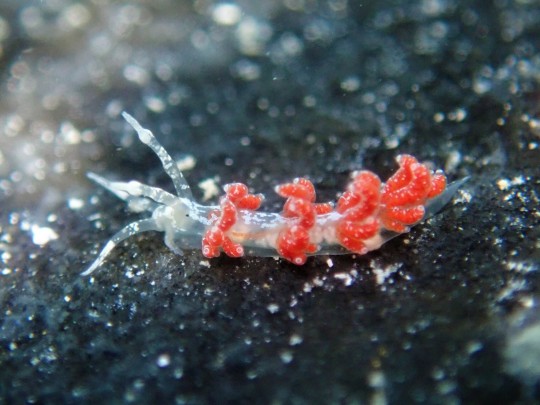
Favorinus auritulus is an aeolid nudibranch found in shallow waters off the coast of the eastern Atlantic, from Brazil to Florida. Interestingly, it was once found unusually north in Chesapeake Bay, though no further sightings have occurred. One common food source for this nudibranch is the eggs of other sea slugs!
Photo - Ben Eddy (b_eddy on iNaturalist)
232 notes
·
View notes
Text
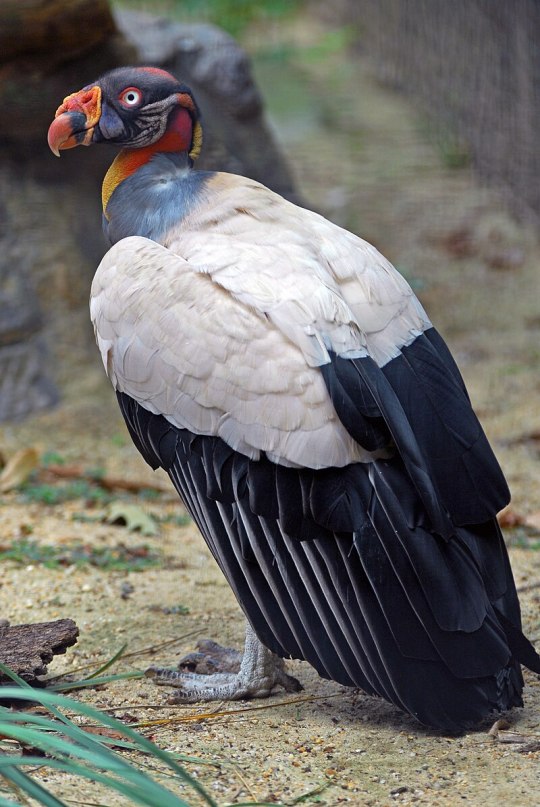
King Vulture (Sarcoramphus papa), family Cathartidae, found in Central and South America
Photograph by Eric Kilby
192 notes
·
View notes
Text
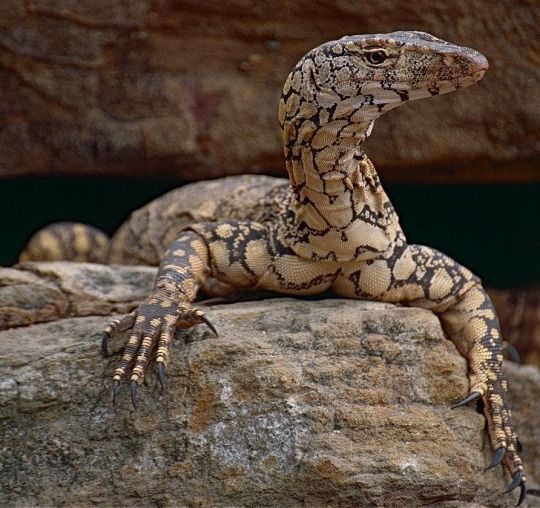
Perentie Monitor Lizard (Varanus giganteus), family Varanidae, found in central and western Australia
photograph by Bernard DUPONT
322 notes
·
View notes
Text

Long-wattled Umbrellabird (Cephalopterus penduliger), family Cotingidae, Ecuador
photograph by Trogon Photo Tours
143 notes
·
View notes
Text
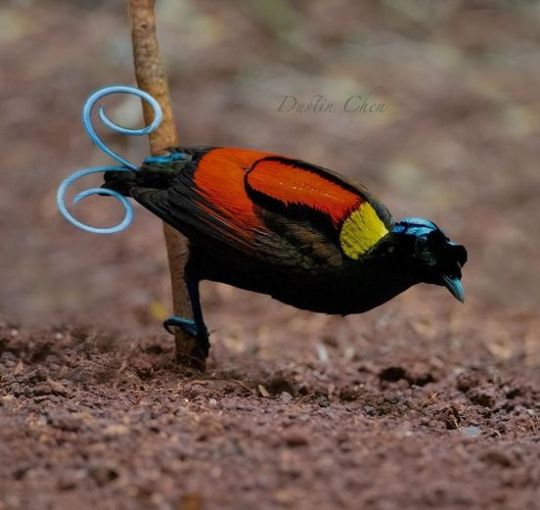
Wilson's Bird-of-Paradise (Cicinnurus respublica), male, family Paradisaeidae, found in rainforests of Waigeo and Batanta Islands off West Papua
photograph by @dustinchen0728
119 notes
·
View notes
Text
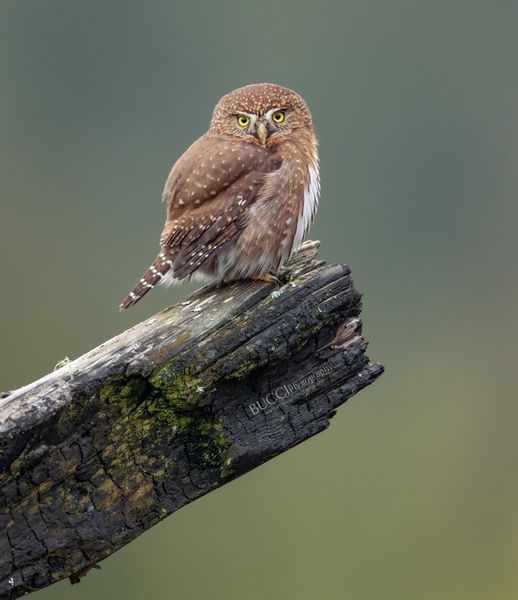
Northern Pygmy Owl (Glaucidium californicum), family Strigidae, order Strigiformes, Vancouver Island, BC, Canada
photograph by Bucci Photography Tours
211 notes
·
View notes
Text
autism screening quizzes will be like “do you take things too literally” and then ask fifty of the worst-worded questions ever dreamt up by man
56K notes
·
View notes
Text
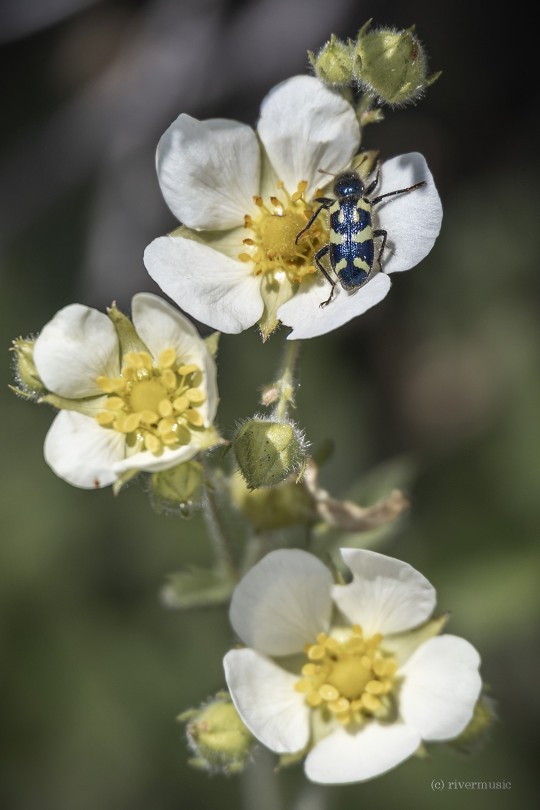
Potentilla, pollination in progress
(c) riverwindphotography, June 2023
301 notes
·
View notes
Text
alright trans ppl we're returning to the fucking sea until shit gets better lets go everyone

85K notes
·
View notes
Text

I found a Clymene moth today! another lovely arctiine, and a childhood favorite of mine that I haven’t seen for a while. the underwings are the same vibrant orange as the head, but I didn’t want to disturb it to see them.
(Haploa clymene)
1K notes
·
View notes
Text

Fire-tufted Barbet (Psilopogon pyrolophus), family Megalaimidae, order Piciformes, found in Malaysia and Indonesia
photograph by Pradip Mondal
305 notes
·
View notes
Text
Daily fish fact #497
Tripod fish!

Their name comes from their tendency to rest completely still on their elongated fins, giving them the appearance of a tripod! When they’re still, their fins appear stiff, but interestingly, when the fish are actually swimming they seem flexible; this had lead to some theories that the fish may pump their fins full of fluids to make them stiff but they’re otherwise quite bendy.
2K notes
·
View notes
